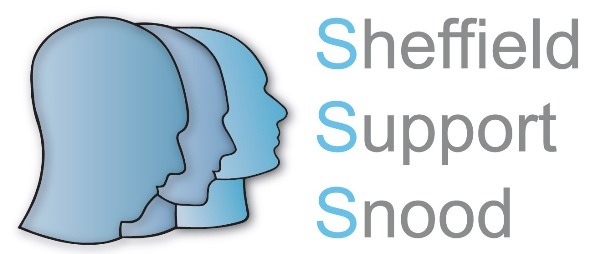
Why are the current neck support collars for motor neurone disease (MND) patients often hated?
The majority of them were designed for a different purpose. So, if you think about when people are involved in a road traffic accident, the paramedics arrive and put a collar on to immobilize the neck and protect the spine. A lot of the collars that we give to our patients with MND were actually designed for that purpose - to immobilize the necks of people involved in trauma… and patients don't want that.
There may eventually come a time when patients have no strength left in their neck at all and do need a rigid fixed collar that prevents all movement but, for the majority of patients, they still have some movement and they want to be able to turn or move their head and have some support while they are doing that.
The other type of collar is the type you can just pick up over the counter; the soft white collars made out of a bandage-like material and foam. They really offer no support. So, at one end of the spectrum you have the collars offering no support… just keeping the neck hot, and then at the other end you have the very hard, rigid collars designed for trauma victims.
So, what you tend to see when you go into patients' houses is all these collars, but they’re all under the cupboard, under the stairs or put to the side somewhere but they’re never actually around patients’ necks!
The Head-Up Project
Please can you give an introduction to the ‘Head-Up’ project and how this began?
We have within SITraN (Sheffield Institute for Translational Neuroscience), a clinical research program, which complements our scientific research, the research which is about trying to understand the causes of MND and develop drug treatments to slow it down and cure it.
The clinical research program is designed to develop interventions that can improve quality of life and support patients who are living with MND now.
To help us decide how to prioritize which particular symptoms to tackle, we have a research advisory group which is a public group, some of whom have experience of MND - maybe because they have known someone with MND in the past, for example.
This group identifies research priorities from a public and patient perspective and one of the things that they told us was a particular problem for patients with MND, was when patients couldn’t hold their head up.
That complimented what health care professionals such as the nurses and doctors in our clinic were also recognizing, that this is a very difficult problem to treat and that the collars that were out there were not really doing their job.
What were the main features patients wanted from a new neck support collar?
They wanted support with movement. They wanted to be able to move the neck with the muscles that were still working, but also have support for the muscles that were weak. So, they didn't want to be locked into a rigid collar but they did want some support.
They also wanted it to be customizable, not a “one size fits all,” but to be able to adjust it to their particular needs as those needs change.
During the course of a day, depending on the activity an individual is doing or the position that they are in, they may want to be able to change the level of support that they get. For instance, if you are in a car being shaken about as you are driven around corners and so forth, you need more support than you would if you were sitting watching the television.
The patients wanted to be able to fine tune the level of support in a task-specific manner.
Also, the level of support a patient needs increases as MND progresses. So, one of the ideas was that patients would receive a collar early on in the course of disease that would stay with them and provide the necessary level of support as their needs change.
One other important matter was for the collar to be more natural. A lot of the collars that are out there at the moment wrap around the neck but give most of their support underneath the chin and stop the head flopping forward. However, the way that the head and neck are naturally held in position is actually from the back. So, the muscles at the back of our neck pull the head back and hold it up. So, it is quite unnatural and not very pleasant for the patient to try and support the head from the front by pushing up underneath the chin. It is difficult to talk if there is something pressing underneath the chin. It also makes it difficult to eat. So, patients wanted a more natural support.

What hurdles did you face in creating a more suitable collar for patients with MND and how were these overcome?
I think getting started was the first hurdle. We had patients and carers who were interested in the project and we wanted to do it but trying to get funding for it was a problem as we had decided on a user-centered design approach. So throughout this research project, it has not been a case of the health care professionals and researchers going away to create this by ourselves. Part of the research team has been patients, carers and the public who have been as much a part of the research team as the designers and the engineers.
What we didn't want to do was come up with an idea as researchers, and then go to a funding body and ask them to fund it. What we were trying to do was explain that we wanted to use the user centred design process to come up with the idea and we would do that over the course of the year.
However, I think funding bodies were a bit nervous about that because they kept coming back to us every time we put an application in saying, "well this is too early, we need to see what it is you think you are going to develop." It was getting that concept across - that we don't want to do that – “we need the money from you first to enable us to adopt this user centred design approach”.
In the end, we managed to get some seed money from Devices For Dignity, which is an NHS health care design cooperative. Then we ran focus groups and workshops with patients and carers and came up with some provisional designs and ideas which were then incorporated in a full proposal. That went to the NIHR i4i funding scheme and they liked the initial ideas while also accepting that we were going to refine them within a user centred design process.
I think that we made it difficult for ourselves by wanting to put users at the center of the design process, but I think the end product is much stronger for that. It's something that patients want and patients have designed.
Does the new collar make use of modern materials?
There isn't anything particularly high-tech about the collar. I think one of the beauties of it, is its relative simplicity. I think what is different about it is its actual design rather than the materials.

Does the design meet the users’ demands?
I think we have achieved a design that answers the users’ specifications about what they wanted. We have the basic lightweight snood construction, which is the scaffold for which the supports can then be built on.
I use the term snood because it’s a bit like clothing - rather than it being a hard medical device, it has the appearance more of a snood that you’d pop around your neck as a fashion item. Indeed, one of the members of the team is a fashion designer so getting her input into how the snood would look and how it would sit on the body was key.
We have the basic snood and then on top of that, the lightweight polymer support structures can be attached and removed, depending on what the individual needs at the time.
What feedback have you had on this new collar so far and how much further evaluation is necessary?
We are just about to undertake an evaluation of it with people who have not seen it before. In fact we recruit our first patient today.
We presented the collar at a MND conference in the summer and the demand from that has been huge but we want to do this evaluation first, with people taking the collars home, and living with them for a month.
We are going to get real live feedback to see if there is any refinement that is needed but we would hope to be able to bring it to market and to the NHS sometime next year.
What impact do you hope this new collar will have on the lives of MND patients?
MND is terrible, and what we need is a cure that stops people from dying from the condition. While something like this collar is not going to change the disease course, we hope it will help improve patients' quality of life and help them get the most out of what they can do.
Where can readers find more information?
For more information please visit:
About Dr Christopher J McDermott
 Chris McDermott studied medicine at the University of Leeds, graduating in 1994. He completed a PhD in Newcastle and Sheffield supported by a Wellcome Trust Fellowship, studying aspects of neurodegeneration.
Chris McDermott studied medicine at the University of Leeds, graduating in 1994. He completed a PhD in Newcastle and Sheffield supported by a Wellcome Trust Fellowship, studying aspects of neurodegeneration.
In 2006 he took up his current post of Clinical Senior Lecturer and Consultant Neurologist within the Sheffield Institute of Translational Neuroscience.
He is Co-Director of the MND Care and Research Centre at the Royal Hallamshire Hospital.
His main research focus is developing an evidence base to improve the treatment of symptoms for people living with MND.